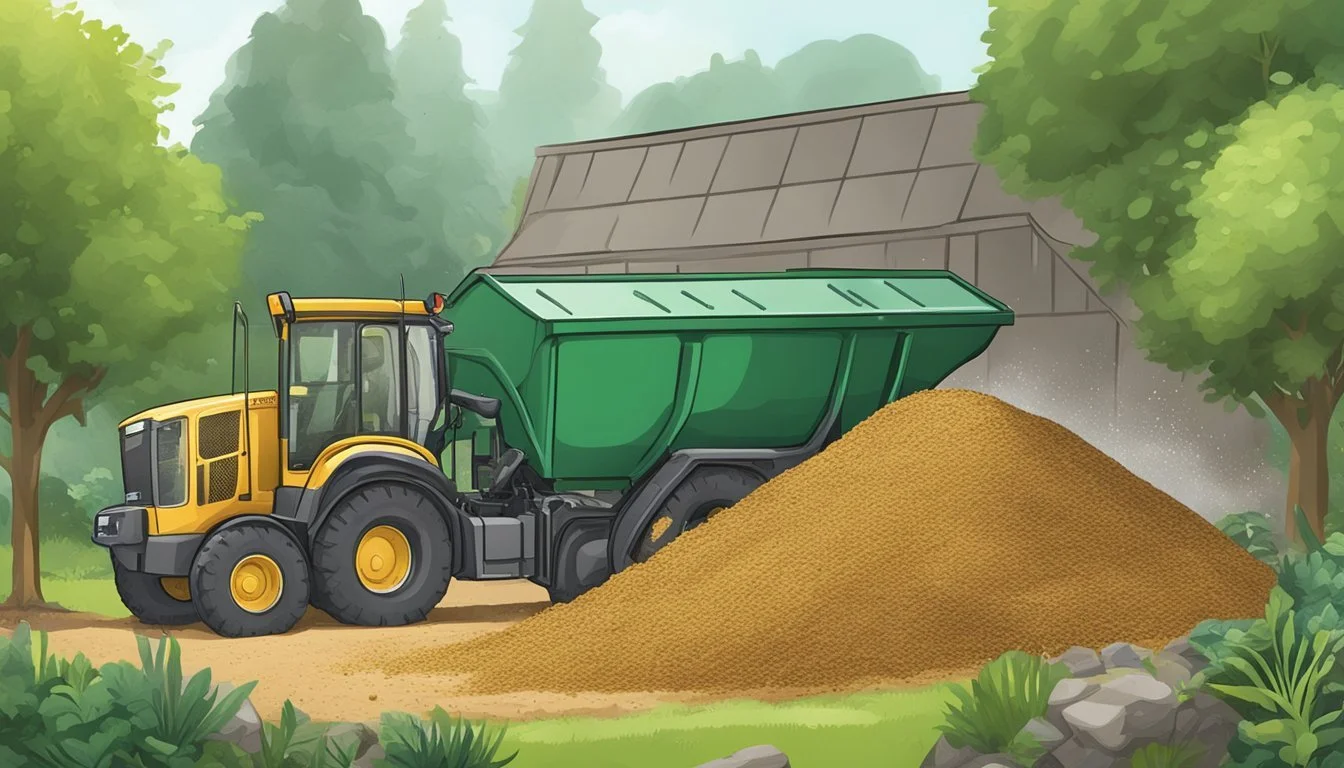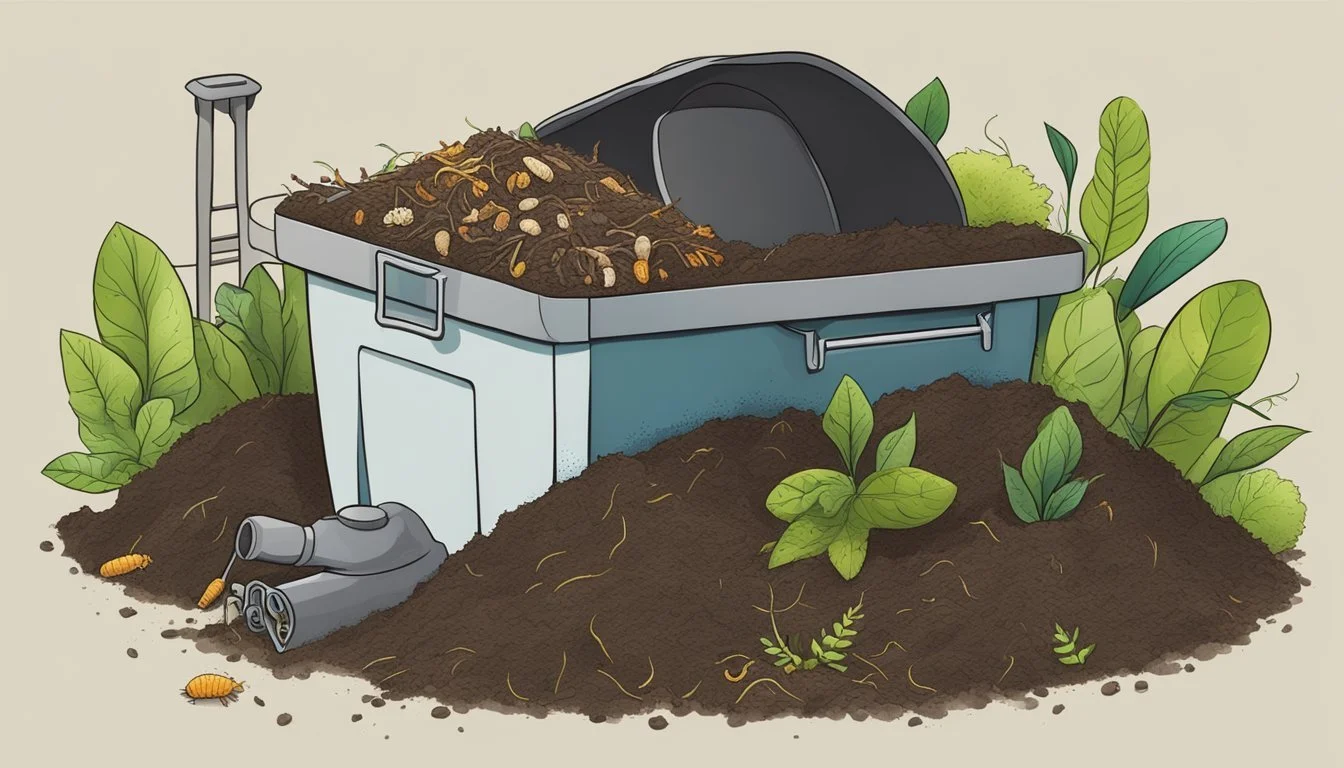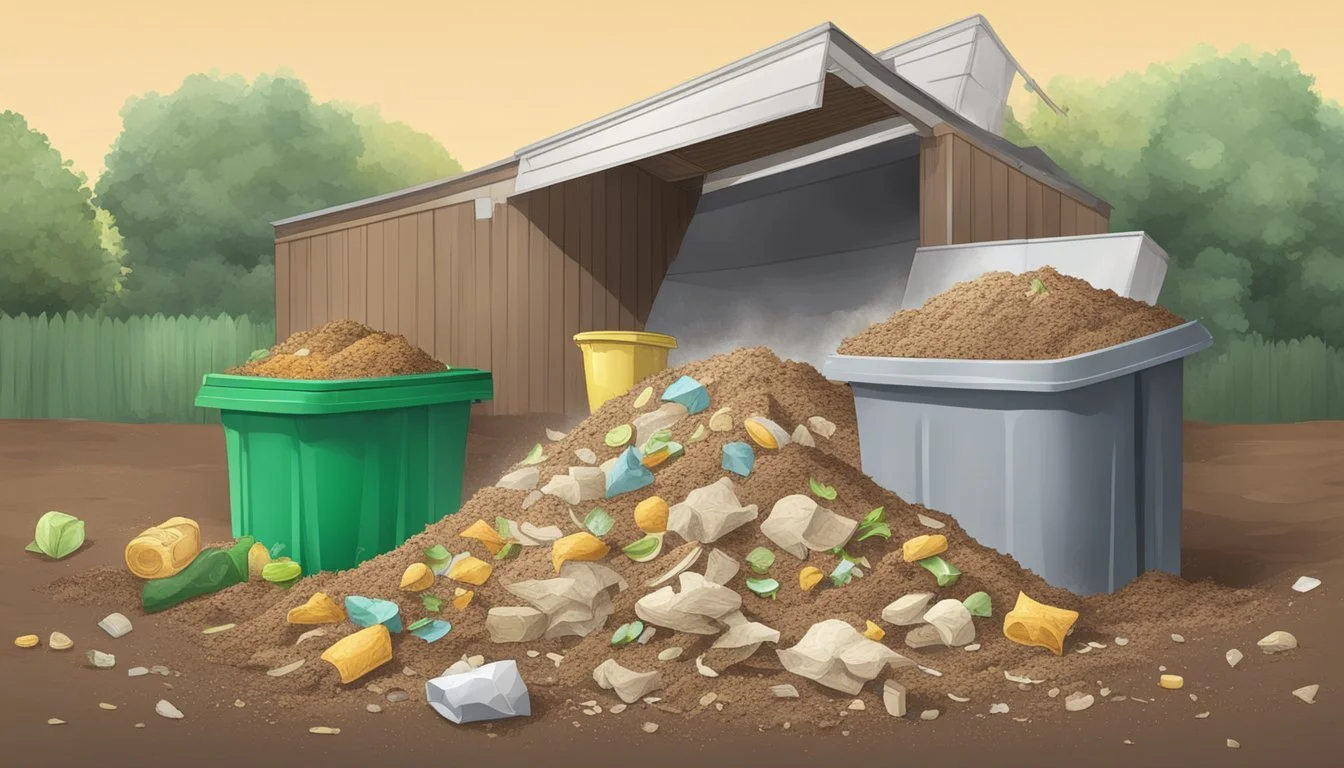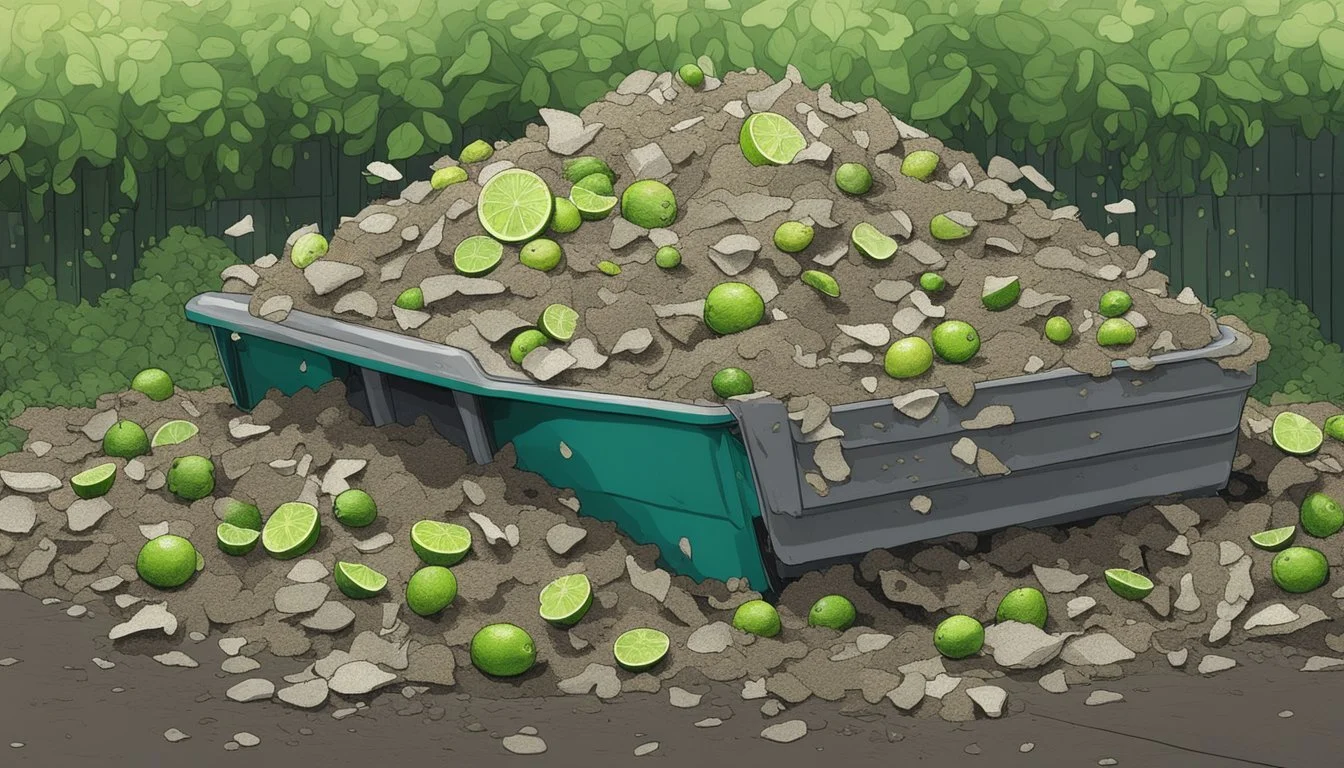Can You Compost Limescale?
Understanding Its Impact on Compost Health
Composting involves the breakdown of organic matter into nutrient-rich soil amendment, an eco-friendly way to deal with kitchen and garden waste. A common query among gardeners and eco-conscious individuals is whether limescale, the hard, chalky residue left by water with high mineral content, can be composted. Indeed, many seek to divert as much waste from landfills as possible, and understanding what materials are compostable is crucial to this process.
Limescale is primarily composed of calcium carbonate, a natural mineral that can have implications for the composting process. While it is not organic matter like vegetable peelings or leaves, limescale does originate from natural minerals and thus raises questions about its compatibility with compost. Since efficient composting relies on the balance of green and brown materials, moisture, and air, the effects of adding limescale to a composting system must be considered with these factors in mind.
Understanding Limescale Composting
When one discusses limescale composting, it's crucial to distinguish between limescale typically found as a mineral deposit in water systems and organic lime materials used in compost. The focus here is on the composting implications of lime's role in acidity management and nutrient balance.
What Is Limescale?
Limescale consists primarily of calcium carbonate and is commonly found in areas with hard water where it forms on surfaces like kettles, pipes, and boilers due to evaporation. It is not typically a substance considered for composting as it is inorganic and does not break down in the composting process.
Composting Basics
Composting is a biological process where microorganisms break down organic matter in the presence of oxygen, transforming it into nutrient-rich soil amendment. For optimal decomposition, compost requires a balance of:
Carbon-rich materials ("browns"): Provides energy for microorganisms.
Nitrogen-rich materials ("greens"): Supplies proteins for microbial growth.
The recommended ratio is usually about 3:1 of browns to greens by volume. Maintaining the appropriate carbon to nitrogen ratio (C) is essential for effective composting, as it ensures a steady decomposition rate without emitting unpleasant odors.
Effects of Limescale on Composting
Composting inherently depends on proper balance. The introduction of limescale, primarily consisting of calcium carbonate, affects several aspects of a compost pile, from its chemical composition to biological activity.
Impact on pH Levels
Limescale tends to have an alkaline effect on the pH levels of a compost pile. When introduced, calcium carbonate acts to neutralize the natural acidity of decomposing organic material. This can be beneficial where the compost is too acidic, but one must monitor to avoid creating an overly alkaline environment.
Influence on Microbial Activity
Microorganisms are essential for breaking down organic matter in a compost pile. Limescale can enhance microbial activity by creating a more favorable pH environment when conditions are too acidic. However, excessive amounts can inhibit microbial function by creating an environment that is less conducive to the organisms vital for composting.
Role in Nutrient Availability
By adjusting pH levels, limescale can indirectly influence nutrient availability in compost. A balanced pH level can improve the availability of nutrients to plants when the compost is used as a soil amendment. The presence of calcium from the calcium carbonate in limescale can also contribute to the nutrient content of the resulting compost.
Incorporating Limescale into Compost
The process of adding limescale to a compost pile involves careful consideration of the composting components and balance. Limescale can be beneficial for neutralizing acidic conditions and aiding the composting process when used correctly.
Proper Composting Techniques
When introducing limescale into compost, it is fundamental to apply the right techniques to ensure effective decomposition. One should gradually incorporate limescale, monitoring its impact on the overall pH balance of the compost. Excessive use of limescale can lead to an overly alkaline environment, which may hinder microbial activity. The compost heap should be turned regularly to distribute the limescale evenly and to maintain adequate oxygen levels which are essential for the aerobic decomposition process.
Monitor Moisture Levels: Limescale can absorb moisture; ensure the compost is neither too dry nor too wet.
Check pH Balance: Use a pH meter or test kit to gauge the necessity of limescale.
Balancing Greens and Browns
It is crucial to maintain a balance of greens, which are nitrogen-rich materials, and browns, which are carbon-rich materials, in a compost pile.
Greens: Kitchen scraps, grass clippings, coffee grounds
Browns: Dry leaves, branches, paper, wood chips
Material Type Examples Purpose in Compost Greens Food scraps, grass Provide nitrogen for microorganisms Browns Dry leaves, cardboard Supply carbon for energy
To effectively compost with limescale, one should add it when there's an abundance of acidic greens. Limescale acts as a complement to offset excess acidity and should be paired with browns to ensure a balanced carbon to nitrogen ratio, aiding in the composting process.
Benefits of Limescale in Composting
Incorporating limescale into compost has specific advantages that enrich the soil and support plant health. These benefits are particularly noticeable in the soil's improved structure and the enhanced growth of plants.
Enhancing Soil Amendment
Limescale, primarily composed of calcium carbonate, can contribute significantly to adjusting the pH level of compost. When compost is overly acidic, the addition of limescale can raise the pH, making the environment more neutral and conducive for microorganisms essential for breaking down organic matter. This adjustment leads to a nutrient-rich compost that is highly beneficial as a soil amendment. Proper pH balance in compost also reduces the likelihood of odor and pest problems.
Soil Structure: The incorporation of limescale-enhanced compost can improve soil aggregation, leading to better aeration and moisture retention.
Improving Plant Growth
The calcium component of limescale is a critical nutrient for plants, playing a substantial role in cell wall development and overall plant structure. By adding limescale to compost, the resulting calcium-enriched soil amendment can help plants develop strong cell walls, leading to healthier and more robust growth.
Nutrient Availability: Limescale in compost can make nutrients more available to plants, promoting more efficient uptake and ultimately, more vigorous plant growth.
Furthermore, this enrichment of the compost with limescale may potentially improve the cation exchange capacity of the soil, which is its ability to hold onto and supply nutrients to plants.
Other Considerations When Composting Limescale
When composting limescale, one should be mindful to maintain the compost's efficiency while avoiding introducing unwanted side effects. The key is balancing the benefits of limescale's calcium carbonate content with the potential for altered pH levels and the associated challenges it may present.
Avoiding Overuse of Limescale
Using limescale sparingly is crucial because an excess can lead to imbalances in the compost's pH level. While calcium carbonate can be beneficial for neutralizing overly acidic conditions, the addition should be measured:
Initial application: A small amount, depending on the compost size.
Periodic assessment: Regular monitoring of pH levels to determine if additional limescale is needed.
One should always aim for a neutral pH range to promote optimal composting conditions, reduce odors, and facilitate a thriving environment for beneficial microorganisms.
Dealing with Potential Drawbacks
Incorporating limescale into a compost mix should be done with an understanding of its potential drawbacks. These can include:
Odor management: Although limescale can reduce odors by neutralizing acidity, it is crucial not to overuse it, as this could hinder composting processes and lead to ammonia or other unpleasant smells.
Garden safety: Before using compost containing limescale in a garden, it is essential to verify that it is free of any pathogens that could have survived in a pH-imbalanced environment.
Environmental concerns: Ensure that the limescale used is free from contaminants that could leach into the soil and harm plant life.
One must carefully evaluate any changes in the compost pile after adding limescale to mitigate these potential issues.
Complementary Composting Materials
In the realm of composting, the materials one introduces play pivotal roles in determining the quality and efficiency of the final compost. Careful selection of suitable organic matter is essential, as is the avoidance of potentially harmful additions that can disrupt the process.
Suitable Organic Materials
Composting thrives on a diverse mix of green and brown materials that decompose at different rates. Essential to this are nitrogen-rich greens and carbon-rich browns, which need to be balanced to ensure proper composting conditions.
Kitchen scraps: These often include vegetable peels, fruit scraps like citrus rinds, and coffee grounds. Citrus should be added in moderation to prevent excess acidity.
Yard waste: Incorporate materials like grass clippings and plant trimmings to introduce nitrogen.
Eggshells: They provide calcium, helping to enrich compost, but should be crushed to speed up decomposition.
Cardboard: Shredded cardboard acts as a brown material, adding carbon and assisting in aeration when layered properly.
Avoiding Harmful Additions
While most organic matter is fair game in composting, certain materials can be detrimental to the pile's health and the broader environment.
Garden lime (calcium carbonate): Use in small amounts to balance pH levels but avoid using it excessively as it can lead to an alkaline compost, hindering microbial activity.
Diseased plants: They might spread pathogens throughout the compost pile.
Chemically treated yard waste: It may introduce toxins into the compost.
When adding these materials, it always helps to consider the balance between them to achieve a rich and fertile compost.
Advanced Composting Practices
In advanced composting practices, incorporating specific additives can optimize the decomposition process and enhance soil quality. Different elements such as limescale, eggshells, and coffee grounds serve particular roles in this refinement.
Vermicomposting with Limescale
Vermicomposting, or worm composting, involves the breakdown of organic waste through the action of earthworms. Limescale, mainly comprised of calcium carbonate, can be beneficial when added sparingly to a vermicomposting system. It serves to neutralize acidic conditions that might otherwise harm the worms. However, care should be taken with its application since an excessive amount could lead to an overly alkaline environment, which could be detrimental. The presence of calcium also helps in improving the structural stability of the compost.
Benefits for earthworms: Ensures a hospitable pH environment for earthworm activity.
Contribution to decomposition: Aids in the breakdown of organic matter by earthworms.
Utilizing Eggshells and Coffee Grounds
Eggshells and coffee grounds are common kitchen waste that can be effectively used in composting. Eggshells contribute valuable calcium, which helps in improving soil structure and plant health. When finely ground, they expedite their incorporation into the soil. Coffee grounds are rich in nitrogen, a critical element in the composting process, allowing for faster decomposition rates.
Eggshells: Offer a slow-release form of calcium and moderate the soil pH.
Coffee grounds: Provide a nitrogen source for microorganisms and are also rich in phosphorus.
Material Benefit to Compost Nutrient Contribution Eggshells pH moderation, calcium boost Calcium Coffee Grounds Accelerates decomposition Nitrogen, Phosphorus
Incorporating these organic waste materials enhances the quality of the resulting compost while also ensuring a more sustainable approach to waste management.
Environmental Impact of Composting Limescale
Composting limescale, an oft-overlooked practice, has distinctive environmental benefits such as reducing landfill waste and contributing to soil health. This process, when managed properly, can mitigate some environmental issues linked with waste disposal and soil management.
Reducing Landfill Waste
Composting limescale significantly decreases the volume of organic materials directed to landfills. By diverting these materials, the production of methane, a potent greenhouse gas, is lessened as organic waste decomposes anaerobically in landfills. The decrease in methane emissions contributes to reducing the overall environmental footprint.
Organic Waste Diversion: The process encourages the recycling of organic materials such as food waste and yard trimmings.
Methane Reduction: Proper composting of limescale prevents its decomposition in landfills, which in turn reduces methane generation.
Mitigating Soil Erosion and Gas Emissions
Composting limescale enriches the soil with necessary nutrients, combating soil erosion and supporting soil structure and fertility. This enhancement of soil quality can bolster plant growth and increase carbon sequestration in soils, which further helps in controlling greenhouse gas emissions.
Enhanced Soil Fertility: Nutrient-rich compost supports soil ecosystems and reduces the need for chemical fertilizers.
Carbon Sequestration: Healthy soils have a higher capacity to capture and hold carbon, mitigating carbon dioxide levels in the atmosphere.
Conclusion
Composting is an effective method for turning organic waste into a nutrient-rich soil amendment. The process hinges on efficient decomposition, driven by the activity of microorganisms. While limescale, typically comprising calcium carbonate, is not a conventional compost ingredient, it may have a place in the composting process under certain conditions.
Limescale's value in compost is its ability to neutralize acidic soil, which can be beneficial for plant growth and microbial activity. However, gardeners should exercise caution, as excess limescale can lead to an overly alkaline compost, negatively impacting the decomposition process.
To maintain balance within compost, it is crucial to:
Monitor the pH of the compost regularly.
Add limescale sparingly, if at all, and only when compost is too acidic.
Consider the needs of the plants that will be using the compost for soil enhancement.
Ultimately, the addition of limescale to compost should be an informed decision backed by understanding and necessity rather than a routine practice. When used judiciously, it can contribute to creating a balanced, nutrient-rich product that improves soil structure and fertility.











